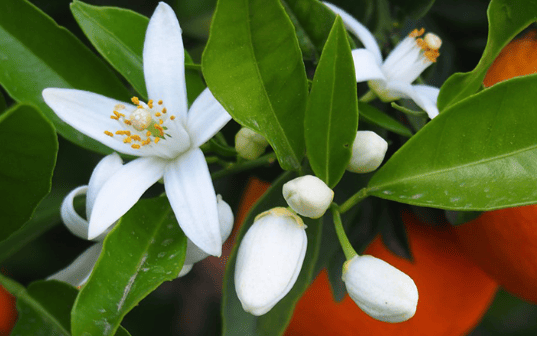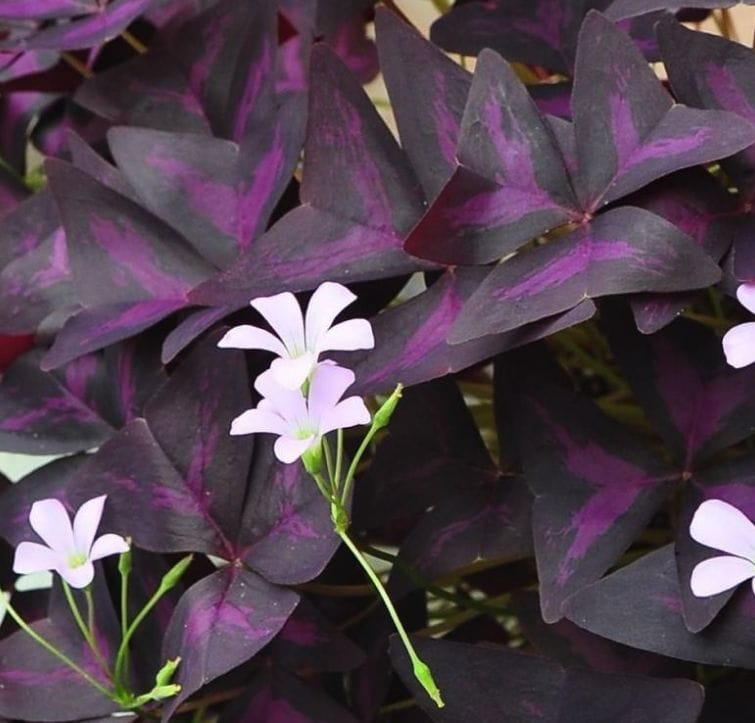10 Flowers That Start With O
If you’re a flower enthusiast or simply someone who adores the vibrant hues and captivating fragrances that Mother Nature has to offer, you’re in for a treat! In the vast floral universe, there are some absolute gems that begin with the letter “O.”
Whether you’re looking for inspiration to revamp your garden, or you’re simply interested in broadening your botanical knowledge, exploring these “flowers that start with O” will prove to be an exciting journey.
From the alluring Orchid to the fragrant Orange Blossom, these “flowers that start with O” offer a wonderful showcase of nature’s diversity and beauty. So, why not take a moment to delve into the fascinating world of these unique blooms?
Each one holds a story and serves a purpose, revealing nature’s wonders and intricacies in the most delightful ways. Please sit back, and let’s embark on this floral journey together!
1. Orchid

The Orchid is a fascinating flower that exists in a myriad of sizes, shapes, and colors, belonging to the Orchidaceae family, one of the largest families of flowering plants.
These captivating flowers have a profound allure that is truly undeniable, with their delicate, symmetrical forms and spellbinding aromas. They thrive in a range of environments worldwide, from frigid tundra to lush tropical rainforests, proving their resilience and adaptability.
The elegance of orchids doesn’t just lie in their enchanting aesthetics. These flowers also play a crucial role in ecosystems, establishing symbiotic relationships with various insects and fungi. Furthermore, the unique reproductive structures of orchids, which often trick pollinators into visiting, reflect the evolutionary ingenuity of these remarkable plants.
2. Orange Blossom

An intoxicating scent wafts through the air when an Orange Blossom is in full bloom. These fragrant flowers, which grow on orange trees, are a symbol of purity and innocence. Their radiant white petals contrast beautifully with the tree’s glossy, dark green leaves, offering a visual spectacle that’s truly a sight to behold. The flower is particularly revered in perfumery, used to create floral waters and essential oils.
Despite their delicate appearance, orange blossoms play a vital role in the production of citrus fruit. The flowers are pollinated by bees, leading to the formation of the much-loved, nutrient-packed oranges. Not just that, their sweet, exquisite flavor is often captured in culinary creations like orange blossom honey or flavor-infusing syrups, revealing the flower’s multifaceted value.
3. Oxalis

Oxalis, often called wood sorrel or shamrock, is an intriguing little plant that boasts tiny, bright flowers. These blooms come in a variety of colors, from dazzling white to sunshine yellow and charming pink, instantly brightening up any space. The distinctive trifoliate leaves, which fold up at night and open during the day, add to the flower’s allure.
Oxalis is an example of nature’s tenacity. While some gardeners view it as an invasive weed, others love it for its vibrant blooms and ground-covering ability. The plant’s tubers allow it to survive in harsh conditions, popping back up when you least expect it. Edible varieties of Oxalis offer a tangy flavor punch, indicating the plant’s culinary significance.
4. Oriental Lily

When it comes to lilies, the Oriental Lily is a show-stopper. This variety is cherished for its large, bowl-shaped flowers, effusing a sweet, heady scent that’s undeniably intoxicating. The blooms, typically white or pink with speckles, bring luxury and drama to any garden or floral arrangement.
But these lilies are not all about appearances. Besides being a visual feast, their blooms serve a crucial function, attracting pollinators with their fragrance and bright colors. Oriental Lilies, with their late-summer blooming period, ensure that gardens continually display color and scent, even when other flowers have finished their show.
5. Oxeye Daisy

An epitome of classic beauty, the Oxeye Daisy is a delightful flower that’s easy to recognize. Its charming white petals, radiating from a bright yellow center, depict simple elegance and grace. These wildflowers are hardy and can thrive in various conditions, making them popular for gardeners seeking low-maintenance blooms.
Oxeye Daisies serve more than just ornamental purposes. They’re essential players in the ecosystem, providing nectar and pollen for various insects. Moreover, these hardy perennials often serve as a ‘pioneer species’ in disturbed soils, playing a key role in soil stabilization and ecosystem recovery.
6. Osteospermum
The Osteospermum, or African Daisy, adds a touch of the exotic to any garden. These dazzling flowers, boasting striking colors such as purple, pink, and white, appear like bright stars against the plant’s dark green foliage. What makes them special is their ability to open their petals wide in the sun and close up in the darker hours, adding a dynamic element to their charm.
A member of the Asteraceae family, Osteospermum is not just known for its good looks. These sun-loving plants are hardy and drought-tolerant, making them ideal for regions with harsh climates. The flowers attract various pollinators, contributing to biodiversity and the well-being of the local ecosystem.
7. Oleander
The Oleander is a flower that combines beauty with toughness. This evergreen shrub produces clusters of flowers, ranging from pure white to deep red, standing out against its glossy, dark green leaves. Native to the Mediterranean and Asia, the plant has an ability to thrive in dry, poor soils, reflecting its hardiness.
However, every part of Oleander is highly toxic if ingested, a trait that has lent it a somewhat notorious reputation. Despite this, the plant is widely used in landscaping due to its resilience and continuous blooming. Its nectar-rich flowers also attract various pollinators, playing an important role in maintaining biodiversity.
8. Osmanthus
Osmanthus, or Fragrant Olive, is a plant that greets you with an intoxicatingly sweet scent before you even see it. The tiny, usually white or yellow, flowers may seem unassuming, but their powerful fragrance leaves an unforgettable impression. They bloom in autumn, a season when many other plants have ceased flowering, creating a delightful late-season spectacle.
Osmanthus’s importance extends beyond its captivating fragrance. The flowers are used to make a range of perfumes and skin care products, revealing their commercial value. Some species are used in traditional medicine or to flavor tea, demonstrating their diverse utility.
9. Opium Poppy
Opium Poppy, scientifically known as Papaver somniferum, is a complex plant with both beautiful and potent attributes. It sports large, silky flowers that come in a range of colors including white, pink, and red, making it a visually appealing addition to any garden. But it’s not just a pretty face – this poppy has a deep history intertwined with human society.
Despite its enchanting appearance, the Opium Poppy is infamous for the powerful alkaloids found in its sap, used to produce narcotics such as opium and morphine. While these substances have been misused, they’ve also been crucial in pain management in medical settings. It’s a perfect example of nature’s paradoxes – a source of both danger and relief.
10. Ornamental Onion (Allium)
Ornamental Onion, or Allium, steals the show in any garden with its bold and architectural form. These plants produce round, globe-like clusters of flowers in purple, blue, pink, and white hues, looking like fireworks frozen mid-burst. These dramatic blooms and their sturdy, tall stems make Alliums a stunning focal point in any landscape.
These onion relatives are not just about their ornamental appeal. Many species have a strong onion or garlic scent when crushed, and this characteristic deters many garden pests.






